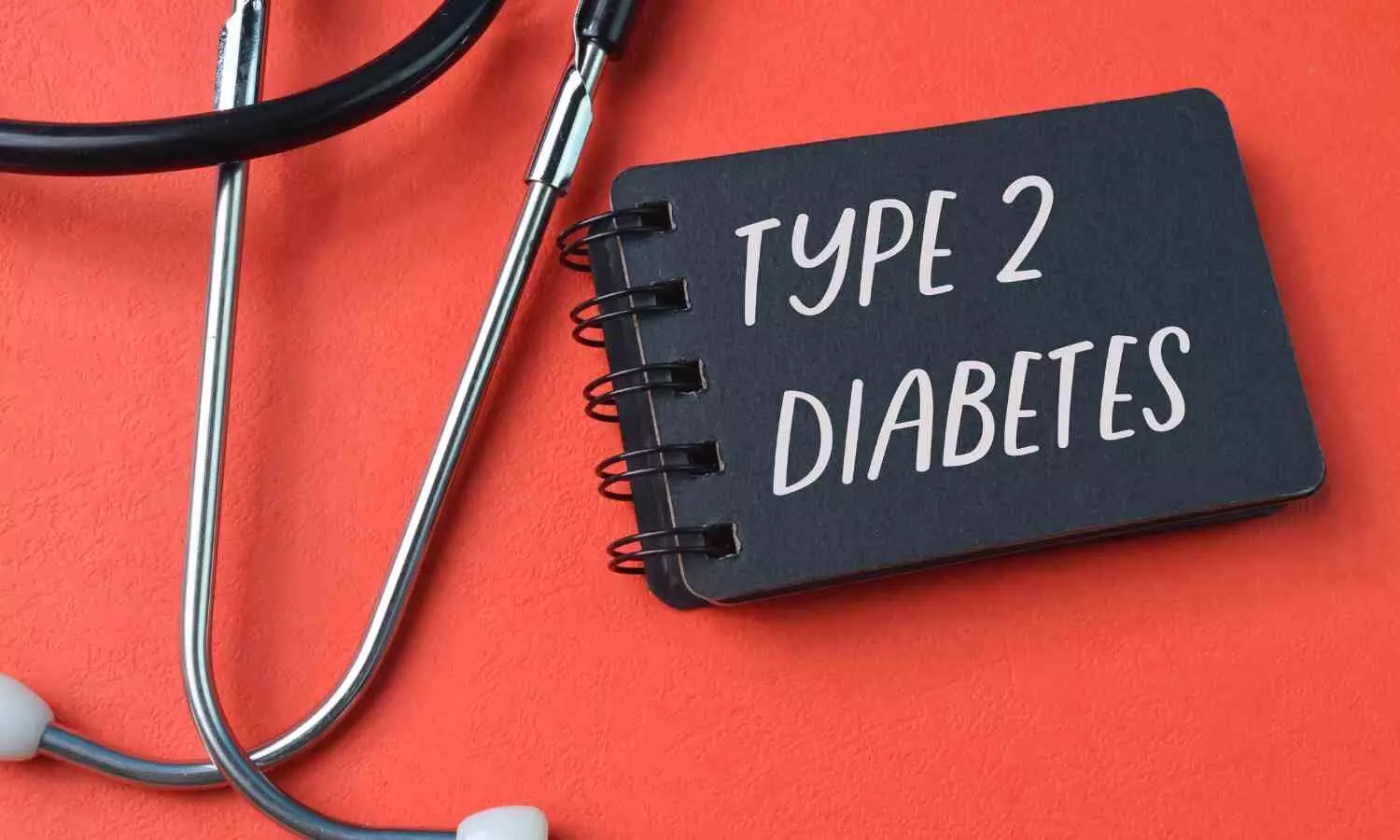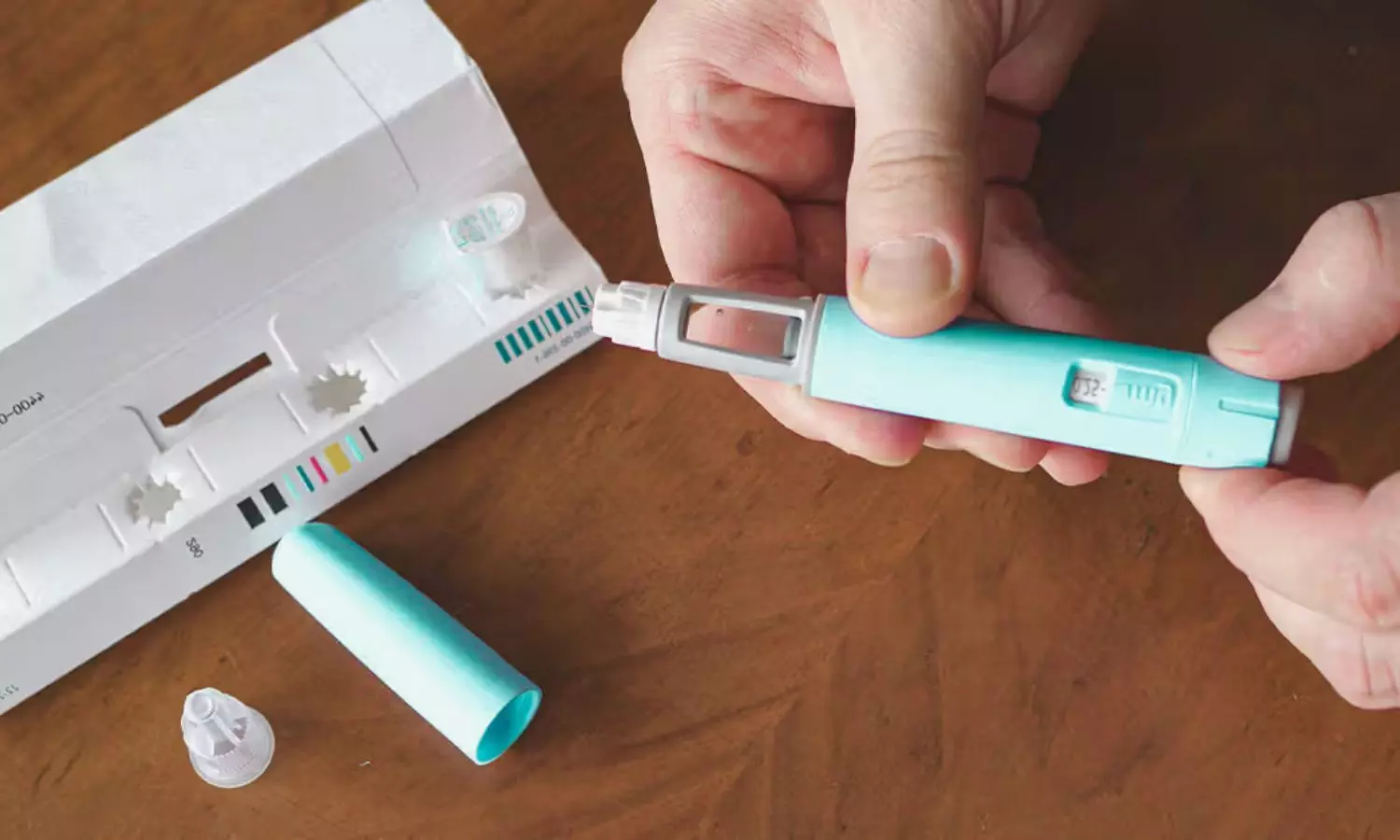Journal retracts paper on apple cider vinegar and weight loss
Powered by WPeMatico
Powered by WPeMatico
Powered by WPeMatico

Bengaluru: A retired gynaecologist from a government hospital in Tumakuru has been sentenced to five years of rigorous imprisonment and fined Rs 20,000 for allegedly accepting a bribe of Rs 2,000 from a pregnant daily wage worker in February 2021 to perform her delivery.
The judgment was delivered by a special court for Lokayukta cases, comprising Judge Yasmin Parveen Ladkhan. The judge noted that, despite being a government employee, the doctor demanded money from a financially weak pregnant woman to carry out the delivery.
The incident dates back to February 2, 2021, when the complainant, a daily wage worker, was brought to the government hospital in labour pain, accompanied by her brother-in-law.
Also read- Doctor sentenced to 20 years jail for sexually assaulting minor
At that time, the doctor allegedly refused to attend to the complainant unless her brother-in-law paid Rs 3,000 in advance for the delivery. Since the husband of the complainant was away for work, the brother-in-law managed to arrange Rs 2,000 and handed it over to the doctor through a Group D staff member.
Later, when he questioned the doctor whether it was right to act so ruthlessly during an emergency, which could have affected the pregnant woman and the child. In response, the doctor said that almost every pregnant patient who visits the hospital for delivery pays Rs 3,000. Therefore, he was not an exception.
To keep the information as evidence, the complainant’s brother-in-law recorded his conversation with the doctor. Later, he filed a complaint with the Lokayukta police on February 4, 2021.
Following the complaint, the police launched an investigation. The audio recording was sent to the forensic science laboratory, which confirmed that the voices belonged to the doctor and the brother-in-law. Along with other circumstantial evidence, the police filed a chargesheet against the doctor, accusing her of demanding and accepting the bribe.
After the matter was taken up by the court, Special Public Prosecutor N Basavaraju informed the judge that the case was not a trap and the voice recording was played during the trial.
Speaking to TOI, Basavaraju said, “The woman was writhing in pain, but that did not affect the doctor. The woman’s husband, also a daily wage worker, was away in the field. Summoned by his brother, he rushed to the hospital. With great difficulty, they arranged a Rs 2,000 bribe, and the brother-in-law handed it over to the doctor through a Group D staffer of the hospital.”
Considering his side, the court sentenced the doctor to five years of rigorous imprisonment and imposed a Rs 20,000 fine. The judge also imposed an additional six months of simple imprisonment in case of payment default.
Also read- 66-year-old doctor sentenced to 3 years jail for molesting minor
Powered by WPeMatico

Intermittent energy restriction, time-restricted eating and continuous energy restriction can all improve blood sugar levels and body weight in people with obesity and type 2 diabetes, according to a study being presented Sunday at ENDO 2025, the Endocrine Society’s annual meeting in San Francisco, Calif.
“This study is the first to compare the effects of three different dietary interventions intermittent energy restriction (IER), time-restricted eating (TRE) and continuous energy restriction (CER) in managing type 2 diabetes with obesity,” said Haohao Zhang, Ph.D., chief physician at The First Affiliated Hospital of Zhengzhou University in Zhengzhou, China.
Although researchers identified improved HbA1c levels, and adverse events were similar across the three groups, the IER group showed greater advantages in reducing fasting blood glucose, improving insulin sensitivity, lowering triglycerides, and strengthening adherence to the dietary interventions.
“The research fills a gap in directly comparing 5:2 intermittent energy restriction with a 10-hour time-restricted eating in patients with obesity and type 2 diabetes. The findings provide scientific evidence for clinicians to choose appropriate dietary strategies when treating such patients,” Zhang said.
Zhang and colleagues performed a single-center, randomized, parallel-controlled trial at the First Affiliated Hospital of Zhengzhou University from November 19, 2021 to November 7, 2024.
Ninety patients were randomly assigned in a 1:1:1 ratio to the IER, TRE or CER group, with consistent weekly caloric intake across all groups. A team of nutritionists supervised the 16-week intervention.
Of those enrolled, 63 completed the study. There were 18 females and 45 males, with an average age of 36.8 years, a mean diabetes duration of 1.5 years, a baseline BMI of 31.7 kg/m², and an HbA1c of 7.42%.
At the end of the study, there were no significant differences in HbA1c reduction and weight loss between the IER, TRE and CER groups. However, the absolute decrease in HbA1c and body weight was greatest in the IER group.
Compared to TRE and CER, IER significantly reduced fasting blood glucose and triglycerides and increased the Matsuda index, a measure of whole-body insulin sensitivity. Uric acid and liver enzyme levels exhibited no statistically significant changes from baseline in any study group.
Two patients in the IER group and the TRE group, and three patients in the CER group, experienced mild hypoglycemia.
The IER group had the highest adherence rate (85%), followed by the CER group at 84% and the TRE group at 78%. Both the IER and CER groups showed statistically significant differences compared with the TRE group.
Zhang said these findings highlight the feasibility and effectiveness of dietary interventions for people who have obesity and type 2 diabetes.
Reference:
Intermittent energy restriction may improve outcomes in people with obesity and type 2 diabetes, The Endocrine Society, Meeting: ENDO 2025.
Powered by WPeMatico

People who use e-cigarettes. cigarettes or both face an increased risk for developing diabetes, according to new University of Georgia research.
Smokers were significantly more likely to be diagnosed with prediabetes and diabetes than nonsmokers, the study found.
“In an era when e-cigarettes are marketed as a ‘safer’ alternative to smoking, this suggests they may carry a hidden peril and may be quietly contributing to long-term health problems like prediabetes and diabetes,” said Sulakshan Neupane, lead author of the study and a doctoral student in the UGA College of Agricultural and Environmental Sciences. “As the use of e-cigarettes rises rapidly, it’s vital we understand their broader health impacts. This is not just about the lungs anymore but the entire body and metabolic health.”
The use of electronic cigarettes, also known as vaping, is increasing, particularly among youth, according to the Centers for Disease Control and Prevention. The findings of the new study suggest rates of diabetes may continue to climb as well for this group.
Additionally, researchers found the risk of developing diabetes or prediabetes is even greater for Hispanic and Black populations in poor socioeconomic conditions, as well as those who have underlying health conditions.
Using cigarettes, e-cigarettes together increases risk of prediabetes by 28%
Utilizing over 1.2 million data points from the Behavioral Risk Factor Surveillance System survey, the researchers analyzed e-cigarette and standard smoking use, and how it correlated to both prediabetes and diabetes diagnoses.
The study found vaping was associated with a 7% increased risk of prediabetes. E-cigarette use may cause short-term insulin resistance and weight gain, both risk factors for prediabetes.
That may seem like a small increase, but it translates to an additional 7,000 cases of prediabetes each year in the U.S based on current rates.
Smoking traditional cigarettes and cigars raised that risk to 15%. For people who vaped and smoked, the risk was even greater at 28%.
Users of both cigarettes and e-cigarettes also had higher odds, 7 and 9% respectively of being diagnosed with diabetes in general as well, not just developing risk factors for it.
“E-cigarette use alone elevates the likelihood of prediabetes, with dual use conferring an additional risk. This study highlights potential compounding harm from using both product types,” said Neupane.
Pre-existing conditions, demographics could exacerbate diabetes risk
Researchers found a variety of characteristics could further elevate the risk of prediabetes and diabetes diagnoses.
Being overweight or obese while smoking increased the chances of developing these conditions, as e-cigarette users with a higher body mass index experienced worse outcomes than normal-weight vapers.
Hispanic, Black and Asian individuals who smoked or vaped were more likely to be diagnosed with prediabetes or diabetes than white people.
People in lower income categories likewise faced a higher risk (12%) of both conditions.
“People who aren’t earning enough money experience mental stress and tend to smoke or use alcohol to reduce that stress, which leads to these increased risk factors,” Neupane said.
But regular exercise made a difference, cutting the risk of prediabetes for smokers down by 8%, which researchers say offer a chance at mitigation.
“These findings have important implications for public health efforts to curb smoking and improve diabetes outcomes,” said Neupane.
This study was published in AJPM Focus. Co-authors included are Agricultural and Applied Economics Professor Wojciech J. Florkowski and Chandra Dhakal, a Ph.D. graduate from UGA who now works for the CDC Foundation.
References: Sulakshan Neupane, MS1 sn14022@uga.edu ∙ Wojciech J. Florkowski, PhD1 ∙ Chandra Dhakal, PhD2,† Published online October 5, 2024 DOI: 10.1016/j.focus.2024.100281 External Link
Powered by WPeMatico

Australia: A risk-guided screening approach can successfully uncover hidden heart problems in adults who have survived cancer treatments known to damage the heart, baseline results from the ongoing REDEEM trial have revealed.
Powered by WPeMatico

Drinking any amount of alcohol likely increases the risk of dementia, suggests the largest combined observational and genetic study to date, published online in BMJ Evidence Based Medicine.
Even light drinking-generally thought to be protective, based on observational studies-is unlikely to lower the risk, which rises in tandem with the quantity of alcohol consumed, the research indicates.
Current thinking suggests that there might be an ‘optimal dose’ of alcohol for brain health, but most of these studies have focused on older people and/or didn’t differentiate between former and lifelong non-drinkers, complicating efforts to infer causality, note the researchers.
To try and circumnavigate these issues and strengthen the evidence base, the researchers drew on observational data and genetic methods (Mendelian randomisation) from two large biological databanks for the entire ‘dose’ range of alcohol consumption.
These were the US Million Veteran Program (MVP), which includes people of European, African, and Latin American ancestry, and the UK Biobank (UKB), which includes people of predominantly European ancestry.
Participants who were aged 56–72 at baseline, were monitored from recruitment until their first dementia diagnosis, death, or the date of last follow-up (December 2019 for MVP and January 2022 for UKB), whichever came first. The average monitoring period was 4 years for the US group, and 12 for the UK group.
Alcohol consumption was derived from questionnaire responses—over 90% of participants said they drank alcohol—and the Alcohol Use Disorders Identification Test (AUDIT-C) clinical screening tool. This screens for hazardous drinking patterns, including the frequency of binge drinking (6 or more drinks at a time).
In all, 559,559 participants from both groups were included in observational analyses, 14,540 of whom developed dementia of any type during the monitoring period:10,564 in the US group; and 3976 in the UK group. And 48,034 died: 28,738 in the US group and 19,296 in the UK group.
Observational analyses revealed U-shaped associations between alcohol and dementia risk: compared with light drinkers (fewer than 7 drinks a week) a 41% higher risk was observed among non-drinkers and heavy drinkers consuming 40 or more drinks a week, rising to a 51% higher risk among those who were alcohol dependent.
Mendelian randomisation genetic analyses drew on key data from multiple large individual genome-wide association studies (GWAS) of dementia, involving a total of 2.4 million participants to ascertain lifetime (rather than current) genetically predicted risks.
Mendelian randomisation leverages genetic data, minimising the impact of other potentially influential factors, to estimate causal effects: genomic risk for a trait (in this case, alcohol consumption) essentially stands in for the trait itself.
Three genetic measures related to alcohol use were used as different exposures, to study the impact on dementia risk of alcohol quantity, as well as problematic and dependent drinking.
These exposures were: self-reported weekly drinks (641 independent genetic variants); problematic ‘risky’ drinking (80 genetic variants); and alcohol dependency (66 genetic variants).
Higher genetic risk for all 3 exposure levels was associated with an increased risk of dementia, with a linear increase in dementia risk the higher the alcohol consumption.
For example, an extra 1-3 drinks a week was associated with a 15% higher risk. And a doubling in the genetic risk of alcohol dependency was associated with a 16% increase in dementia risk.
But no U-shaped association was found between alcohol intake and dementia, and no protective effects of low levels of alcohol intake were observed. Instead, dementia risk steadily increased with more genetically predicted drinking.
What’s more, those who went on to develop dementia typically drank less over time in the years preceding their diagnosis, suggesting that reverse causation-whereby early cognitive decline leads to reduced alcohol consumption-underlies the supposed protective effects of alcohol found in previous observational studies, say the researchers.
They acknowledge that a principal limitation of their findings is that the strongest statistical associations were found in people of European ancestry, because of the numbers of participants of this ethnic heritage studied. Mendelian randomisation also relies on assumptions that can’t be verified, they add.
Nevertheless, they suggest that their findings “challenge the notion that low levels of alcohol are neuroprotective.”
And they conclude: “Our study findings support a detrimental effect of all types of alcohol consumption on dementia risk, with no evidence supporting the previously suggested protective effect of moderate drinking.
“The pattern of reduced alcohol use before dementia diagnosis observed in our study underscores the complexity of inferring causality from observational data, especially in ageing populations.
“Our findings highlight the importance of considering reverse causation and residual confounding in studies of alcohol and dementia, and they suggest that reducing alcohol consumption may be an important strategy for dementia prevention.”
Reference:
Topiwala, A., et al. (2025) Alcohol use and risk of dementia in diverse populations: evidence from cohort, case-control and Mendelian randomisation approaches. BMJ Evidence Based Medicine. DOI: 10.1136/bmjebm2025-113913
Powered by WPeMatico

UK: Researchers have found in a new study that methylphenidate did not significantly reduce fatigue severity in patients with advanced cancer after 6 (± 2) weeks of treatment. However, it was found to be safe and well-tolerated.
The phase III, double-blind, placebo-controlled trial, published in Health Technology Assessment and led by Dr. Patrick Stone and colleagues from the Marie Curie Palliative Care Research Department, University College London, aimed to assess whether methylphenidate could offer clinical benefit for cancer-related fatigue in palliative care patients. This large-scale study involved 162 adults with advanced cancer and moderate-to-severe fatigue, recruited from 17 palliative care services across England between June 2018 and April 2023.
Patients were randomly assigned to receive either methylphenidate or a placebo, with the medication dose gradually increased over six weeks, depending on individual response and side effects. The primary objective was to evaluate changes in fatigue levels after six weeks, using the Functional Assessment of Chronic Illness Therapy – Fatigue (FACIT-F) scale.
The following were the key findings of the study:
Despite previous meta-analyses suggesting that methylphenidate may benefit cancer-related fatigue, this rigorous trial did not confirm a meaningful therapeutic effect. Researchers highlighted the highly selective nature of the participant group due to extensive exclusion criteria and noted that the chosen threshold for clinical significance may be open to debate.
Given the findings, the authors concluded that methylphenidate should not be recommended for managing fatigue in patients with advanced cancer receiving palliative care. However, they acknowledged the potential for further research into its use in other populations or for different indications.
“Cancer-related fatigue remains a challenging symptom to treat, and while methylphenidate was shown to be safe, its effectiveness in this context appears limited based on current evidence,” they wrote.
Reference:
Stone P, Minton O, Richardson A, Buckle P, Enayat ZE, Marston L, Freemantle N. Methylphenidate versus placebo for fatigue in patients with advanced cancer: the MePFAC randomised controlled trial. Health Technol Assess 2025;29(36). https://doi.org/10.3310/GJPS6321
Powered by WPeMatico

Researchers have found in a new nationwide population-based study published in the Journal of Affective Disorders that patients with Graves’ disease face a significantly higher risk of developing psychiatric disorders compared with the general population, highlighting the complex interplay between thyroid autoimmunity, neuropsychiatric health, and long-term disease management. The study analyzed a large cohort of individuals diagnosed with Graves’ disease against matched controls and found that the risk was particularly elevated for depression, bipolar disorder, anxiety disorders, and sleep disturbances, with these associations persisting even two years after the initial diagnosis. Interestingly, no significant association was observed between Graves’ disease and the risk of schizophrenia, suggesting that the thyroid-psychiatric link may be specific to certain mental health conditions rather than encompassing all psychiatric disorders. These findings underscore the importance of integrating psychological assessment and monitoring into routine clinical care for patients with Graves’ disease, as mental health complications may extend beyond the acute phase of endocrine dysfunction and persist well into long-term follow-up. The mechanisms underlying these associations may involve immune-mediated pathways, alterations in thyroid hormone regulation affecting neurotransmitter systems, chronic disease burden, or psychosocial stressors related to living with a long-term autoimmune condition. For clinicians, the results reinforce the need for interdisciplinary collaboration between endocrinologists, psychiatrists, and primary care physicians to ensure early detection and appropriate management of psychiatric symptoms in patients with Graves’ disease. For patients, the findings highlight the importance of awareness regarding mood changes, anxiety, or sleep disturbances as possible complications linked to their thyroid condition, emphasizing the role of proactive mental health care in improving quality of life and treatment outcomes. While the study provides robust evidence from a large dataset, further research is warranted to explore causal mechanisms, evaluate the impact of antithyroid treatments on psychiatric risk, and determine whether early psychological interventions can mitigate long-term complications. Overall, the study strengthens the argument for holistic management approaches that address both the endocrine and psychological dimensions of Graves’ disease.
Keywords: Graves’ disease, psychiatric disorders, depression, bipolar disorder, anxiety, sleep disorder, thyroid autoimmunity, Journal of Affective Disorders
Reference: Journal of Affective Disorders. “Risk of psychiatric disorders in patients with Graves’ disease: A nationwide population-based analysis.” Published September 16, 2025. DOI: 10.1016/j.jad.2025.09.041.
Powered by WPeMatico

Food noise refers to obsessive and intrusive thoughts about food and eating. This preoccupation with food can hinder healthy lifestyle implementation and lead to overeating, making weight loss difficult.
Previous research has found that 57% of people who have living with overweight or obesity have experienced food noise, although few are familiar with the term. Many of those affected said that food noise made it more difficult to make healthy food choices or stick to an exercise plan.1
Some people also report that food noise affects their quality of life and their wellbeing.2
Glucagon-like peptide-1 (GLP-1) receptor agonists such as semaglutide (brand names Wegovy and Ozempic) are highly effective at helping people who are living with obesity lose weight. By mimicking the action of a hormone called GLP-1, they reduce appetite and feelings of hunger, slow the release of food from the stomach and increase feelings of fullness after eating.
However, little is known about how semaglutide, which was developed by Danish pharmaceutical company Novo Nordisk A/S, affects food noise.
To find out more, researchers from Novo Nordisk and Market Track LLC, a market research company, conducted a survey of 550 people in the US (average age 53 years, 86% female) who were taking semaglutide for weight loss.
Some 81% (447) of the participants said they had been taking semaglutide for at least four months and 86% of the participants reported weighing at least 92kg (14st 7lb) before starting treatment.
The participants were asked how food noise was currently affecting them and to recall how it had affected them before starting treatment.
Analysis of the results showed that the participants were experiencing less food noise than before.
The proportion of participants experiencing constant thoughts about food throughout the day fell almost four-fold from 62% before starting treatment to 16%. The proportion who said they spent too much time thinking about food fell by a similar amount, from 63% to 15%.
The proportion who said they had uncontrollable thoughts about food fell more than three-fold from 53% to 15%; the proportion who said their thoughts about food had negative effects on them or their life fell from 60% to 20%; and the proportion who said their thoughts about food distracted them from completing everyday activities fell from 47% to 15%.
The survey also contained questions that covered several areas of mental wellbeing.
Here, 352 (64%), 417 (76%) and 438 (80%) of the respondents reported an improvement in mental health, self-confidence and the development of healthier habits, respectively.
It is not known if these improvements were related to the drop in food noise or to the participants’ weight loss.
The study’s authors conclude that semaglutide may reduce the amount of food noise that is experienced by individuals who are living with obesity.
Reference: Taking semaglutide turns down food noise, research suggests, Annual Meeting of the European Association for the Study of Diabetes (EASD)
Powered by WPeMatico
